Roopkund is considered as one of the most scenic and exciting trek in India. Situated at the height of 4750 meters (15800 feet) in a remote corner of Chamoli District in Uttarakhand, this trek offers memorable experiences of hiking, camping and walking. This trekking route passes through the dense forest, through the lush-green alpine meadows, requires night camping in to the wild and above the cloud, ends very close to the snow-bound peaks of The Himalayas. Hundreds of tourist trek on this route every year to feel the serenity and tranquility of this area.

Being a backpacker, the most craziest thing for us is to move anywhere , anytime without extensive planning. I also don’t plan my trip thoroughly. But, when you trek to the places like Roopkund Lake, you shouldn’t move without proper planning and a backpacking checklist. Planning of packing list is required, because you have to carry your backpack for at least 23 kms one way from the height of 7875 ft (Wan Village) to the height of 15689 ft (Roopkund Lake). At Some places climbs are very steep. You have to plan your night halts also so that you can get proper acclimatization every night. You have to plan your equipments, so that you can sleep comfortably in the night under subzero temperature. You have to plan your gears for trekking on the snow, hiking under the intense sun or trekking during the rain. I mean this is not a place, where you can just move out with a camera in your hand and backpack on your back. You have to plan each and everything here.

This post aims to help you to choose a right backpack and other trekking essentials, so that you can complete your trek without any hassle. The list is not intended for Roopkund Trek only. It can help you to plan your packing list in many other treks also.
Whether to Purchase Trekking Gears or Rent Out? For a single trek, these trekking gears may seem expensive and It is also not advisable to buy all these for a single trek. Many of the trekking gears can be rented from Indian Mountaineering Foundation (IMF) in New Delhi or from many other vendors at very reasonable prices. However, if you wish to be in trekking business seriously, It is advisable to invest in trekking gears one by one. In a long term, you will enjoy with your gears more and more.
Trekking/Hiking Gears:
Backpack: Choosing a right backpack is the most important thing for any trek or say any trip. It is your best friend during the trip and your only home, where you get things to keep yourself comfortable on the road. While backpacking to normal destinations, you are free to choose big size backpacks, but for a trek, it is very important to choose a right size of backpack. Your entire trek depends on the weight of your backpack. If you have plans to hire porters or mules, then also, it is very necessary to have a right size of backpack. Your porter has to carry his own stuffs also along-with your backpack, because he also needs to spend his nights in the freezing cold with you. Similarly, if your backpack is too large, then it will be difficult to adjust with other backpacks on a mule.

For a one-week trek like Roopkund Lake, I generally carry a 50-liter Quechua Forclaz 50 backpack (Price: INR 2700). I put my camping tent inside the backpack with the clothes. I keep Sleeping bag and trekking pole outside the backpack. Along-with a Lowepro AW DSLR camera bag (I keep a lot of small stuffs like Swiss knife, head lamp, medical kit etc inside it), this backpack is an excellent choice for me. It has a very nice padding on the back, so that my back do not feel any pain. Shoulder straps are wide enough and nicely padded to provide comfortable support.
But this size has its own limitations also. After packing the tent, clothes, sleeping bag etc, if I wish to pack some cooking equipments (utensils and stoves) also, then there is no space in this backpack. In that case, I recommend a 70-liter Quechua Backpack. You can accommodate everything nicely in that backpack.
Day Pack: A Small daypack is a nice idea to carry camera, mobile, water bottles, first-aid kit, cosmetics and other stuffs those you may use frequently. I generally carry a Lowepro AW DSLR Camera Bag (Price: INR 5541 online). It is quite big in size, but it easily accommodates my Canon DSLR with three lenses, a point & shoot camera and other small stuffs.
Weight of Backpack: If total weight of your backpack and day-pack is more than 10 kg, try to hire a porter or a mule. Choice is yours, but in my opinion, with more heavy backpacks, it is very difficult to enjoy the trek at that height.
Backpack Cover: At the lower heights (upto Bedini Bugyal in Roopkund Trek), rain is frequent and can occurs suddenly. Always carry a rain cover or a plastic sheet to cover the backpack during the rain. Forclaz 70 has a built-in cover, but Forclaz 50 doesn’t. You can buy a separate cover for Quechua backpack. They are not 100 % waterproof, but they are useful during slight rain.
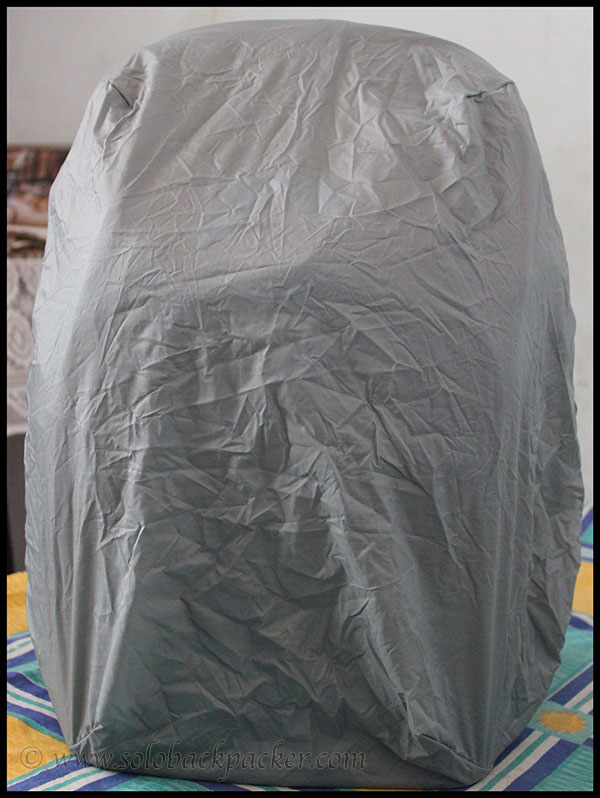
Tip: A cheaper option is to buy a 2-meter plastic sheet. It comes handy in sudden rain to avoid any harm to backpack or to the clothes and seems safer than the backpack cover.
Sleeping Bag: For Roopkund Trek, a sleeping bag should be able to protect you upto -5 degree Celsius at least. Branded sleeping bags are very light, but they don’t have an extra layer of fur/fleece. Some expensive branded sleeping bags are able to protect you at that temperature, but high cost is a deciding factor.
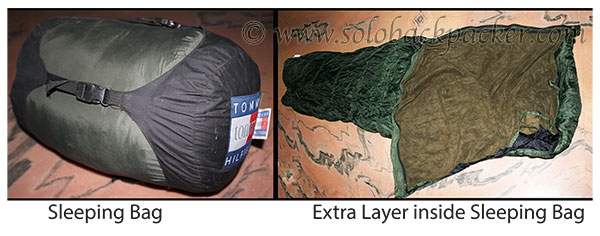
I bought a local sleeping bag (Price: INR 1700, Weight: 1.5 kg) from Gopinath Market in Delhi Cantt. It has an extra layer of fleece inside, which is detachable from the sleeping bag. At Bhagwabasa, the highest point during Roopkund Trek, I did not feel any difficulty due to the cold.
Tip: While sleeping in the night, its better to put an extra layer of cloth, gloves, socks and monkey-cap. These are very helpful to keep you warm.
Camping Tent: Camping Tent is your second home in the night at those remote places. Choosing a right camping tent with right weight is very essential. I have Quechua T3 Plus Tent (Price: INR 3284 online from playgroundonline). It doesn’t open up instantly, but It never took us more than ten minutes to fixed it. Its packing is cylindrical and weight is about 4.5 kgs, so it can easily fit in my backpack. Three people can easily sleep in this tent with their backpack inside.

Instant tents are a good choice only if you travel by your own vehicle. They can pop-up in 2 minutes, but due to the spherical packing, they can’t be adjusted inside a backpack. and also, they are easy to open, but packing them again in the right manner needs some extra efforts.
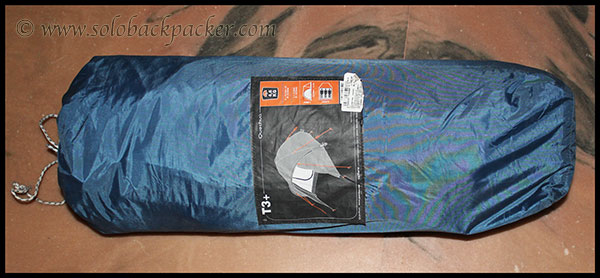
Then, there are some very expensive ultra-lite pro tents also.
Trekking Shoes: Comfortable and ankle-high shoes are must for any trek. They provide good ankle support at uneven surfaces of hills and mountains. Traction of the shoes should be good enough to walk on mud-trails and snow. It should have some deep grooves in the bottom. The shoes should be lightweight (not heavy like Woodlands) and it must have a waterproof/ snow-proof quality. On the trek like Roopkund, rain can occur anytime and if shoes and socks gets wet, the things get worse only.
I have Quechua Forclaz 500 trekking shoes (Price: INR 2971 online from playgroundonline). It is a very nice and comfortable product with all required qualities. The price of this shoes vary from retailer to retailer. Its price is around INR 5000 now, but a shopkeeper in Gopinath Market asked me INR 4000. I searched it online and paid only INR 2971. 3-days later, on the same portal, its price was INR 3400.

It is not required to buy a branded one, if you are not intended for the frequent trekking trips. You can get any local shoes with these qualities at Sadar Market or Gopinath Market in Delhi Cantt after paying one-third price of the branded one.
Tip: Before going for any trek with the new trekking shoes, it is always advisable to walk with them for at least one week, so that you feel comfortable with your shoes during the trek.
Slipper: It is required to walk around the camps/guest houses in the free-time. Any type of slipper is good enough.
Sunglasses: Sunglasses are required to protect the eyes from the intense heat of the sun in the noon. Always buy a goggle with 100 % UV protection and minimum category 3 lenses.
I have a pair of ORAO SG 800 Sunglasses (Price: INR 1453 online from playgroundonline). It has four different combination of lenses from category 1 to 4, that can be changed easily. These lenses provide 100 % protection from the UV rays.

Trekking Pole: Trekking pole is required to walk on the snow. It also comes handy during the climb/descent at the hiking trails.
I bought a Hongjun trekking/hiking pole (Price: INR 519 online) from Rediff. Its price is less than the price of Quechua Forclaz 300 hiking pole (INR 999, most popular hiking pole). It also has a compass and a 9-LEDs torch on the top with nice handle grip. Compass is not reliable, but torch performance is good. If you don’t wish to buy a pole, you can carry a wooden stick also.

Knife: Simple foldable knife is a very crucial item to carry. For expensive one, you can buy any Swiss Army knife from Victronix.
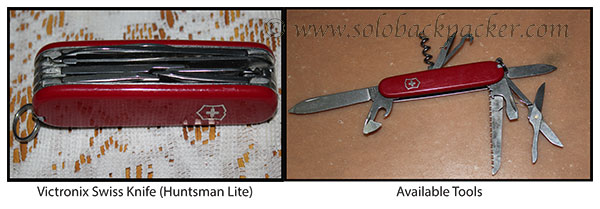
Torch: A small torch should also be there. Carrying a headlamp is a nice idea.

Another excellent option is to buy a Coghlan dynamo torch/flashlight (Price: INR 900). These torches are very small in size and needs no batteries or charging, just crank it for one minute and you will have bright light for 30 minutes (Although, I don’t have this).
Clothes: Choose your clothes wisely and don’t pack too much. I mean, when you don’t hope to bath for five days on a 10-days trip, its better to pack only 3-4 pairs. No jeans please. Denim Jeans are not comfortable during the trek. Carry trousers (lowers) or trek suites and fleece jackets (better than shirts and sweaters). Carry clothes that can dry easily.
Essential things to pack: A heavy jacket, 3-pair of socks (one should be woolen to use at lower tempreature), A cap with hood to protect from sun-rays, a monkey cap or balaclava, upper and lower warmers, a thin towel, a pair of gloves (upto 0 degree celsius) , a rain coat or poncho
Comsetics and other Matreial:
Sunscreen: Absolute necessity to avoid sun-burn due to intense sun-rays.
Other items: Cold Cream, Lipbalm, Shaving kit, Shampoo (3-4 sachets are sufficient during Roopkund Trek), Facewash, Soap (one for hand-wash and other one for bath), Comb, Mirror, Toothbrush and Toothpaste.
Wipes: You may not be able to get water or a separate bottle to use for toilet purposes at every place. It is better to have a small pack of baby wipes to use in this situation.
Camera and its accessories: There is no electricity to charge the camera batteries for five days. So always carry an extra battery. For Canon EOS 550 D, I carried one extra battery and I was able to click pictures during the entire trek. Do use your camera wisely. Clicking pictures at every step may drain out your battery and memory in 2-3 days. Also carry extra memory cards.
Mobile: Since there is no electricity for five days, its advisable to keep your smartphone switch-off and use only when required.
Diary/Pen: It comes handy to note down daily expenses and other important points.
Document: Carry an ID proof and a rough itinerary of your trekking plan. Also leave a copy of the itinerary at your home.
Money: Do not carry more than INR 6000 in cash. No credit cards/debit cards accepted on this route. However, before reaching Roopkund, you can find ATMs at various towns.
Plastic Sheet: 2-3 meter plain plastic sheet to avoid sudden rain burst.
Polythene: To bring back the waste materials, wet clothes (Please don’t litter there)
Water: Running water on the Himalayan Mountains is as good as mineral water. You should drink them without any hesitation. But for your satisfaction, you can take chlorine tablets with you. Also carry at least two bottles of one litre capacity. Water is available frequently till Pathar Nachauni, but after that, on the last day, it is advisable to move out with two litres water. Water is not available at Bhagwabasa.
There is another excellent water filter available from safetykart. It is known as LifeStraw (Price: INR 750) and considered as the invention of the year by Time magazine (Although, I don’t have this). This compact, ultra-light water filter is capable of purifying at least 1000 litres of water in its lifetime without adding any external chemical.
Feviquick: Just in case, you need it.
Safety Pins: Carrying 5-6 safety pins is always a good idea.
Rope/String: You should always carry at least 5 meters of rope (nylon/other material).
Hammer: Small hammer of about 300-400 gms weight is good enough for camping purpose.
Food Items that you should carry during the trek:
Chocolates, Biscuits, Milk cake, Toffee (Carry extra quantities, Distribute some of them among the local children. You can feel the joy of spreading a smile 🙂 )
Dry Fruits (Each items not more than 200 grams): Kishmish, Badaam, Kaju
What Should be in your First-Aid Box?
Combiflam: for fever and body pain (5 tablets)
Dispirin: for headache (5 tablets)
Crepe Bandage : One roll
Band-Aid : 5 pieces
Digene : for bad stomach (5 tablets)
Cottons : One roll
ORS : helps in case of dehydration, loose motion ( 3 packets are sufficient)
Betadine Cream : for cuts and wounds
Iodex : for back-pain, sudden twist in legs
Pudin Hara : for bad stomach (5 tablets)
Guaze Roll : for wound
Glucon-D : instant energy provider (One packet)
Ear-Buds : 10-20 ear buds
This is all about the packing list for Roopkund Trek. Next time before going to any trek or any backpacking trip, choose the right and essential gears, leave the extra stuffs and pack your backpack wisely. It will make a lot of difference on your travel experience. For a trek, follow a simple rule. Just do not pack the items, those are available or those are not necessary for survival at that altitude. You may keep some items for your comfort, subjected to available space and weight of your backpack. Many things you can buy on the go. But remember, once you enter in the wilderness of Roopkund Trek, neither you can buy anything nor you can ask those things from someone else. You have to survive on your backpack only. This is true for all trek, whether it is 5-days, 10-days or 20-days duration. Choose your packing list wisely and enjoy your journey. Do let me know through the comments, if I forgot to mention something.


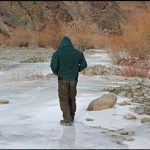



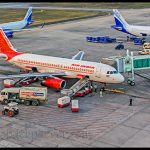

Hi
Is it good to got this week for Roopkund Trekking?
Thank you for this very informative page.
Very informative and inspiring.
Great information. Thanks for sharing.
Very valuable info.Thanks mate.
Hi ! I am from Delhi and I am planning a trek to roopkund in the 1st week of December with my 2 friends we have done treks before like chandrashila,vasudhara falls,triund n ol …..should we plan for it this December ?? Please suggest
You Can, but it may be a lot of snow there and you may need some technical gears. Normally, people go upto Bedini Bugyal only during the winters.
dear friend
it is really very informative.&amazing but my problem is I
have never trekked before is it possible for me first time
We do a lot of things for the first time. Don’t think, just go ahead with some basic preparation. If you can manage some short duration treks in Himalayas before Roopkund, that would be really nice, else start trekking with Roopkund only. However, it needs some mental and physical fitness. All the best. 🙂
Amazing write up and delivered in exceptional detail! Thank you Solo!
Could you please share the ease/probability and pricing of tents and sleeping bags that can be rented from Lohajung?
Hi, We have our own tents and sleeping bags. So we did not use these facilities from Lohajung.
please give details of jackets we should buy during roopkund trek , and where to buy them from.
Any good winter jacket will work there. Better to have layers of woolen clothes.
Thank you for informative post.
Hi Friend,
I am planning to trek to roopkund this May. Can you tell me if I can hire trekking equipments from Lohajung or Haridwar?? The items I will be requiring are
Tent
Sleeping Bag
Sleeping Mattresses
Trek Pole
Rain coat
Ice axe
Utensils
Thanks in advance.
Hi Monika,
It’s better to arrange them at Lohajung. Local folks can arrange it at Wan or Didna Village also. But, give them at least one day time. If you can’t coordinate prior to your arrival at Lohajung, an instant arrangement may not be possible.
Hello there,
I want to know three things.
1. How did those chinese poles held up? are they any decent?
2. How do you pack tent inside the backpack?
3. Any suggestions for warmers?
Hi mate,
Hope you are doing great. Here are your answers:
1. How did those chinese poles held up? are they any decent?
Yes, They hold good with the outer layer of the tent.
2. How do you pack tent inside the backpack?
It’s length is less than the length of my backpack, So I simply keep it inside the backpack.
3. Any suggestions for warmers? I found this brand in Mumbai.
http://prrems.com/mens-wool-full-sleeve-thermal
No idea about this one. I have warmers from Quechua and Neva and they are good so far. Actaully, I use 2-3 thermals in layer, so it works well for me.
hey man your information was very helpful. could you suggest on how to plan a trip to kuari pass in december and if it is advisable?
Hi, Kuari Pass is at the height of 4300 meters aprrox, so it is accessible in the winter also. But, you have to walk on the snow during that period. So, prepare accordingly. The trek starts from Joshimath and you have to reach Kuari Pass via Chitrakhana- Tali Top and Khullar. You can return via Tali Top and Auli to Joshimath. The whole trek will take 5-6 days.
Really nice. Trekking Equipment also give you plate form to buying online these things.
Your website looks nice, but why don’t you mention the price of any equipment?
For price of product please contact us on call.
Hey buddy the article is very useful, we are planning for next week for roopkhund.
Have a Nice Trip. 🙂
Hey…Thanks for the blog..very helpful for a first timer like me..
hey, thanks for sharing !
Hey buddy…I really loved reading through your blog. Appreciate the level of detailing you have done. Really worth a read and very helpful for a first time back pack traveller like me. Thansk a ton for your efforts 🙂 Good luck
Detailed information provided – you have covered almost everything right from basics to essentials and the trek itself.
Thanks for sharing this, it would be really helpful.
How is roopkund to trek in December – could I plan to go there somewhere in 1st week in december.
Thanks..Roopkund is still doable in December. But expect to walk on the snow after Bedini Bugyal. If snow will be more, you may not be able to find your way without a guide. Also, when there is snow, you may not able to enjoy the green views offer on this trek route. Why not to trek between May to October to enjoy those greenery.
Hi Solo BackPacker,
I’m also doing Roopkund solo this october.
Problem is, I have a shoestring budget.
Can you detail the total expenses for Roopkund? Lohajung to Lohajung?
Thanks!
Prashant
Hi Prashant,
Roopkund Trek is easily possible on shoestring budget. We were in the group of three people and per person cost was about Rs.4800. If you go trough this link on Roopkund Trek, you will have a general idea about the typical charges on this trek.
amazing …. can you please tell me some more locations were i can go for trekking alone in october for 10 days. Also , isnt there any problem caused by wild animals ? And do i need a permit ?
Hi, October is one of the best month to go for the trek in Himalayas..You can go for many treks like Hampta Pass, Bhabha Pass, Yamunotri-Har Ki Doon, Tapovan, and also Roopkund Trek. Generally, people do not encounter wild animals during these trek. Normally, the wild animals never create any problem on any of these treks. and for Roopkund Trek, you don’t require any type of permit.
Hi,
Stumbled on this while searching for items to carry in a trek. Going with “TrektheHimalayas” on their Roopkund trek. First time trekker here, so a tad confused. Since I’m flat footed, which shoes should I buy ? Also since I’m a first timer, should I carry everything or hire a porter ? Any other advice I should know ?
Thanks ! 🙂
Hi, Since you are trekking with TTH, they will take care for most of the things. You can buy any comfortable shoes with a a good grip, preferably from an Army store, if you don’t wish to buy a branded one. If the weight of your backpack is not greater than 8-10 kgs, no need to hire a porter. Carry the backpack on your own. Just relax, and enjoy the beauty of nature, while trekking to the lake. Cheers.
Thanks a ton for the reply ! Changed the program. Going to Goencha La trek with Pac Adventures. They seem like a great team with low trekkers per batch. 🙂
Hey Solo Backpaker,
Thank you so much for all the stuff you mentioned in this post. Really very useful.
I am struggling to buy UV Sunglasses, actually as per your blog post decided to buy ORAO SG 800 but these glasses are having interchangeable lens, I believe its hard to change the lens every time. So I am thinking about Photo Chromic glasses, please check the below link.
http://www.decathlon.in/accessories/sunglasses/cycling-&-running/bislett-grey-photo/p-235885.htm
Although the cost of this in Decathlon is pretty high, we can get it in some other sites around 2200 INR. Please give your suggestion about this Sunglasses, about which one is better ORAO Photo Chromic or ORAO SG 800.??
Hi, As far as you are comfortable with the price, Photo Chromic is really a nice buy. It is true that interchangeable lenses have this problem to change them every time. I also tried at home, and it was really hard. But while trekking to Roopkund, the sun-rays were very intense, so I never tried to change the lens there. The category 4 lens was already fixed there and it worked fine. ORAO Photo Chromic lens adjusts its UV protection from Category 1 to Category 3. So, you can go for this. But, in fact, the category is not so important. The important point is that your sunglass should have UV lens. Thats it.
Amazing piece of information…..every required detail mentioned systematically.
Thanks!
These info. can definitely come in handy before a trek.
Thanks for the share!:)